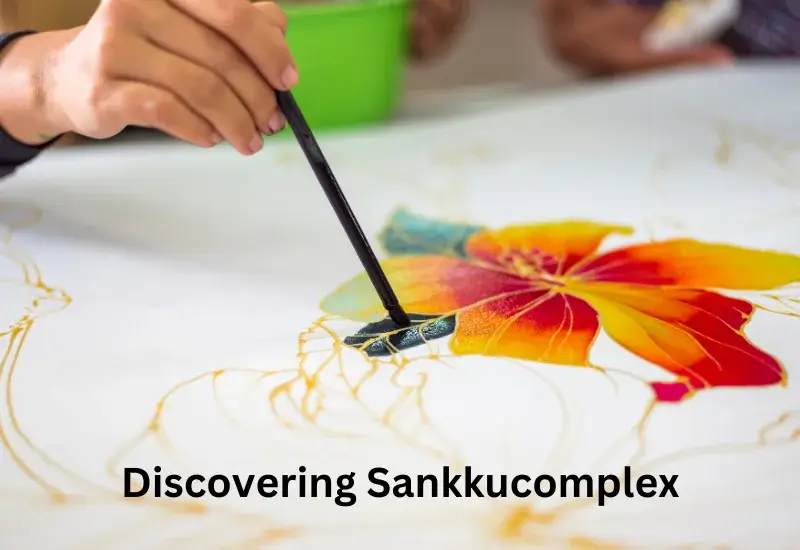Uncovering the Richness of Sankkucomplex: An In-Depth Cultural Exploration
Sankkucomplex might not be a well-known term globally, but its cultural importance runs deep in the regions where it thrives. Rooted in rich traditions and vibrant customs, it reflects the spirit of community life and captures the essence of historical and cultural practices. A blend of history, art, and celebration, Sankkucomplex plays a key role in shaping societal values. By exploring its depth, I aim to foster a greater understanding and appreciation for this intriguing cultural tradition.
The Origins and History of Sankkucomplex
Sankkucomplex traces its roots back several centuries, emerging from the daily lives of agrarian communities. Initially, it was intertwined with nature and agricultural cycles, symbolizing the community’s respect for the land and seasons. What began as a practical tradition for honoring nature evolved into a symbolic expression of cultural identity.
As societies developed, Sankkucomplex became more intricate, with detailed designs and patterns incorporated into ceremonies marking significant life events like births, marriages, and harvests. Over time, the designs came to represent the community itself, reflecting not only the bond between people and nature but also the heritage and shared values of those who practice it.
In many communities, Sankkucomplex also became a form of storytelling. Through oral traditions passed down from generation to generation, these designs gained deeper layers of meaning, preserving history, values, and collective identity. Today, it stands as a living testament to the fusion of history, identity, and tradition, continuing to define the cultural landscape of the communities that cherish it.
Sankkucomplex in Traditional Ceremonies and Festivals
Sankkucomplex plays a central role in traditional ceremonies and festivals, acting as a powerful symbol of cultural pride and heritage. Each design element is imbued with meaning, often representing themes of fertility, prosperity, unity, and spiritual harmony.
In agrarian societies, Sankkucomplex is especially prominent during harvest festivals. These events celebrate the community’s gratitude for nature’s abundance, with elaborate rituals that display complex patterns and symbols. These symbols don’t merely serve as decoration; they reflect the core values of the community and honor the natural cycles that sustain them.
Weddings are another occasion where Sankkucomplex shines. Vibrant colors and intricate designs adorn the ceremonial spaces, symbolizing happiness, fertility, and the promise of a prosperous future for the couple. Every element is carefully chosen to convey blessings and create a strong connection between the newlyweds and their ancestors.
Religious festivals also showcase Sankkucomplex, where participants don traditional attire inspired by these motifs. The performances are not just entertaining; they serve as a means of preserving ancestral traditions, ensuring that younger generations remain connected to their cultural roots.
Cultural Traditions and Beliefs Surrounding Sankkucomplex
The cultural practices linked to Sankkucomplex are as rich and diverse as the communities that celebrate them. A central aspect of this cultural phenomenon is the use of symbols and designs during important life events. These designs go beyond simple decoration, serving as a medium through which ancient wisdom and beliefs are communicated.
One key cultural practice is the gathering of community members to share stories and knowledge, often led by elders who are the keepers of these traditions. Through storytelling, they pass on moral lessons and cultural values to younger generations, fostering a deep sense of identity and continuity within the community.
Music and dance are also integral to Sankkucomplex gatherings. Traditional songs and rhythmic dances, often performed during ceremonies, narrate the community’s history and reinforce social bonds. These performances serve a dual purpose: entertaining the audience while also preserving and transmitting cultural history.
Respect for nature is another deeply ingrained belief in Sankkucomplex culture. Many designs incorporate elements representing the sun, rain, animals, and crops, underscoring the importance of living in harmony with the environment. This respect for nature permeates the cultural practices of these communities, guiding their approach to spirituality and daily life.
Modernization’s Influence on Sankkucomplex
Like many traditional practices, Sankkucomplex has faced challenges as modernization and globalization have accelerated. Urbanization and the increasing influence of global cultures have created a disconnect between younger generations and their cultural roots. The tension between maintaining tradition and embracing modernity has become a central concern for many communities.
However, modernization has also presented opportunities for Sankkucomplex to evolve and reach a wider audience. Social media and other digital platforms have provided a space for cultural sharing, allowing Sankkucomplex to be celebrated by people who might not have been exposed to it otherwise. Online visibility has helped preserve the practice and allowed for its dissemination beyond its original geographic and cultural boundaries.
On the flip side, modernization has also led to some commercialization of the tradition. Festivals that once had deep spiritual meaning can sometimes shift towards spectacle, potentially diminishing the essence of what Sankkucomplex represents. Yet, many communities are working to balance these changes by preserving the core values of the tradition while finding new ways to make it relevant to contemporary audiences.
Preserving and Revitalizing Sankkucomplex in the Modern Era
Preserving and reviving Sankkucomplex in today’s rapidly changing world requires deliberate effort. Cultural preservation starts with education, and many communities have taken up this responsibility by organizing workshops and cultural events that teach the younger generation about the significance of Sankkucomplex.
These workshops often involve hands-on activities, where participants learn the intricate designs and patterns associated with Sankkucomplex. By engaging with the practice directly, younger individuals develop a personal connection to their heritage, fostering pride and a sense of duty to keep these traditions alive.
In the digital age, online platforms have become crucial for cultural preservation. Blogs, social media, and forums allow people to share their knowledge of Sankkucomplex, post images of ceremonial designs, and engage in discussions about its cultural significance. This increased visibility can attract the attention of individuals who may not have been aware of Sankkucomplex, helping ensure its survival in the modern world.
Collaborations between contemporary artists and cultural historians have also helped breathe new life into Sankkucomplex. By incorporating traditional motifs into modern art forms, these collaborations create a fusion of old and new, making the practice accessible and appealing to younger generations.
Conclusion
In a rapidly evolving world, understanding and appreciating cultural traditions like Sankkucomplex is crucial, as they reflect a community’s history, values, and identity. These traditions not only preserve cultural diversity but also foster unity in an interconnected society. Sankkucomplex reminds us that our past shapes our present, and by honoring our heritage, we can navigate modern challenges with a stronger sense of identity. Efforts to preserve and evolve Sankkucomplex highlight the balance between tradition and innovation, ensuring its relevance for future generations. Ultimately, it is a living tradition that continues to influence and enrich the cultural landscape.
For more information visit: The Readings Hub







